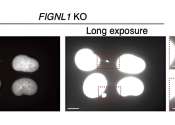Researchers clone 'half-tendrilless' gene locus in pea mutant afila
Pea is the fourth largest edible legume crop in the world and is widely cultivated throughout the world. Several classical leaf mutants have been identified in peas, including unifoliata (uni), afila (af), tendril-less (tl), ...









